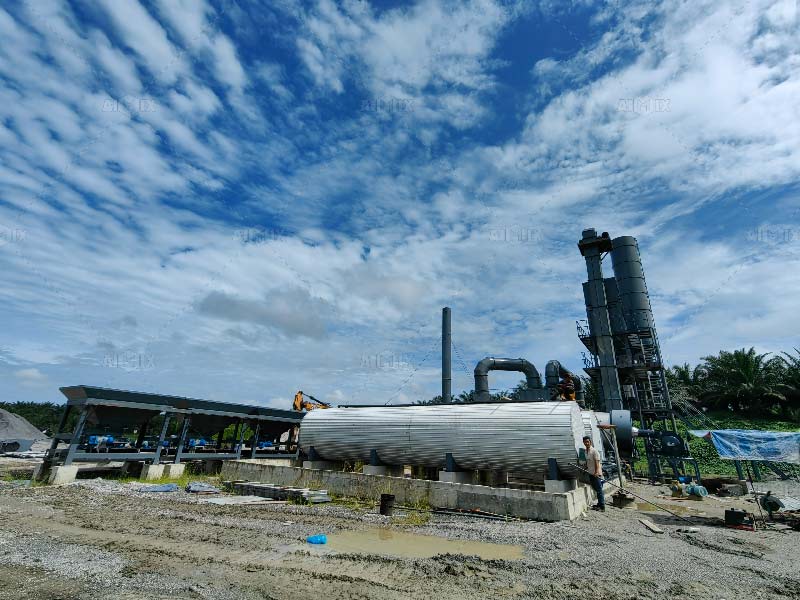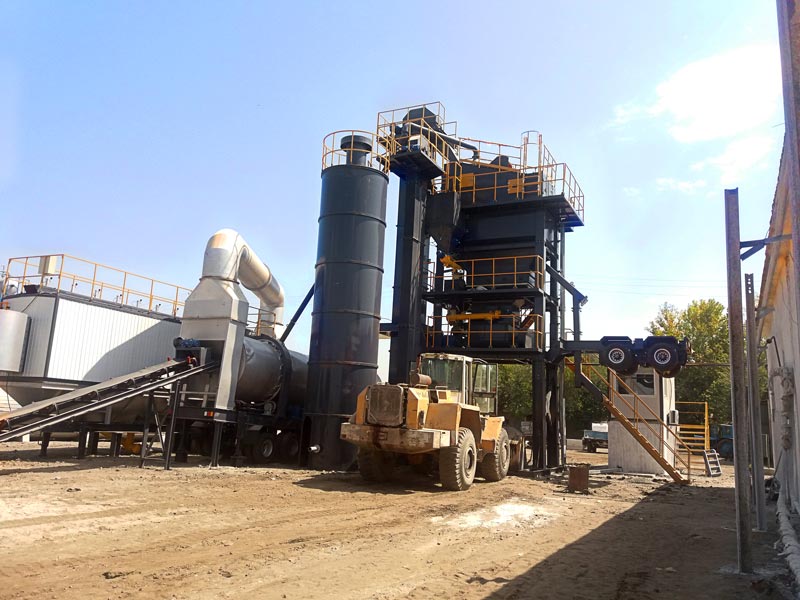Asphalt plants play a key role in road construction and infrastructure development. However, dust emissions during asphalt production are a significant environmental concern. To minimize these emissions and comply with environmental standards, dust removal measures are essential. In this article, we will explore various dust removal techniques tailored for different types of asphalt plants, including mobile asphalt plants, drum mix asphalt plants, and others. Understanding these measures helps ensure both the efficiency of the asphalt production process and environmental sustainability.
Understanding the Dust Problem in Asphalt Plants
Asphalt plants(Planta de aglomerado), especially those producing hot mix asphalt, tend to release dust and particulate matter into the air. These emissions can cause air pollution and pose health risks to nearby communities. It is essential to address this issue through effective dust removal measures that capture airborne particles before they can be released into the atmosphere. The need for efficient dust removal solutions is more pronounced in mobile asphalt plants and drum mix asphalt plants, which are highly mobile and may operate in various locations.

Dust Removal Techniques for Asphalt Plants
There are several dust removal techniques used in asphalt plants. These techniques vary based on the type of plant, the scale of operations, and the environmental regulations in place. Below, we’ll discuss some of the most commonly used methods:
1. Baghouse Filters
Baghouse filters are one of the most widely used dust collection systems in asphalt plants. These filters consist of large fabric bags that trap dust particles as they pass through the system. Baghouse filters are highly efficient in capturing fine dust particles and are commonly used in both stationary and mobile asphalt plants(planta de asfalto movil precio). By using baghouse filters, asphalt plants can reduce the amount of dust released into the environment and comply with regulatory standards for air quality.
2. Cyclone Separators
Cyclone separators use centrifugal force to separate dust particles from the air. The dust-laden air enters the cyclone chamber, where it is spun rapidly, causing heavier particles to be separated from the airflow. This method is often used in combination with other dust control measures, such as baghouse filters, to achieve better dust removal efficiency. Cyclone separators are particularly beneficial in drum mix asphalt plants, where large volumes of air are generated during the heating and mixing of aggregates and asphalt binder.
3. Wet Scrubbers
Wet scrubbers use water or a water-based solution to capture dust particles. As the dust-laden air is forced through a scrubber, water droplets capture the particles and wash them away. Wet scrubbers are effective at removing both coarse and fine dust particles, making them suitable for environments with high levels of particulate matter. In mobile asphalt plants, wet scrubbers are often employed due to their portability and ability to work in diverse conditions.

4. Electrostatic Precipitators
Electrostatic precipitators (ESPs) use an electrical charge to attract and collect dust particles from the air. The particles are ionized, and then attracted to a collection surface where they can be removed. ESPs are highly effective at removing fine dust particles and can be used in large-scale asphalt plants. However, their initial cost and maintenance requirements can be higher compared to other methods. Still, they are a viable option for drum mix asphalt plants(planta de asfalto continua) and large stationary plants that produce high volumes of emissions.
5. Dust Suppression Systems
Dust suppression systems use water or other chemicals to reduce dust levels during the production process. These systems can be installed on various parts of the asphalt plant, such as the aggregate feeders, conveyors, and stockpiles. Water sprays or misting systems are often used to prevent dust from becoming airborne during the handling and mixing of materials. Dust suppression is an essential part of the dust control process, especially in mobile asphalt plants, which can face fluctuating weather conditions.
Choosing the Right Dust Removal System for Your Asphalt Plant
The choice of dust removal system depends on various factors, including the type of asphalt plant, the local environmental regulations, and the specific needs of the plant. For instance, mobile asphalt plants may benefit from compact and portable dust control solutions such as baghouse filters and wet scrubbers, which offer mobility and ease of installation. On the other hand, larger stationary plants, such as drum mix asphalt plants, may require more advanced systems like electrostatic precipitators or a combination of cyclone separators and baghouse filters to handle higher volumes of dust emissions.
Cost Considerations
While investing in a dust removal system is crucial for environmental protection, it is also essential to consider the cost of installation, operation, and maintenance. Mobile asphalt plants tend to have a lower overall investment in dust control due to their smaller scale, but the cost of dust removal systems can still affect the asphalt plant price(precio de planta de asfalto). For larger plants, the cost of dust removal equipment may be a significant portion of the overall plant investment. However, it is important to balance cost considerations with the long-term benefits of compliance with environmental standards and improved air quality.
Conclusion
Dust removal is an important aspect of running a modern asphalt plant. By implementing effective dust collection and suppression measures, such as baghouse filters, cyclone separators, and wet scrubbers, asphalt plants can significantly reduce their environmental impact and ensure compliance with local regulations. Whether you operate a mobile asphalt plant or a drum mix asphalt plant, choosing the right dust control system will help improve air quality, reduce health risks, and increase the efficiency of your operations.